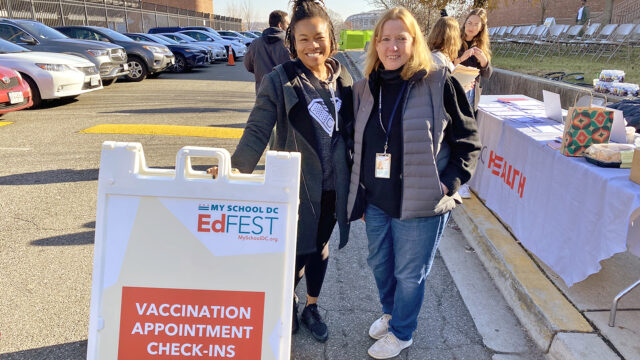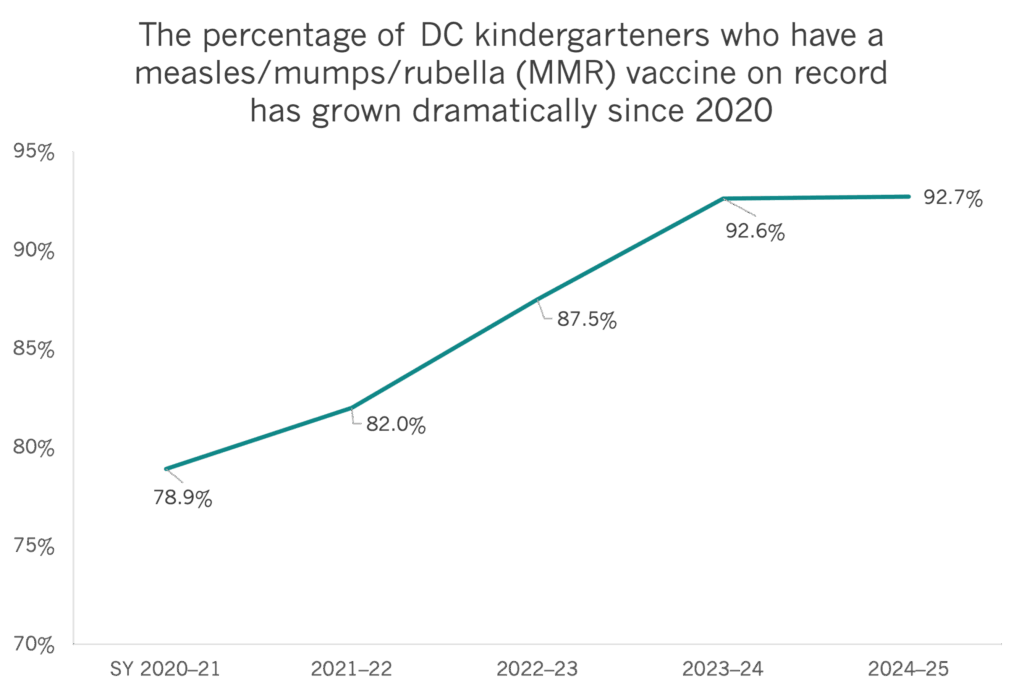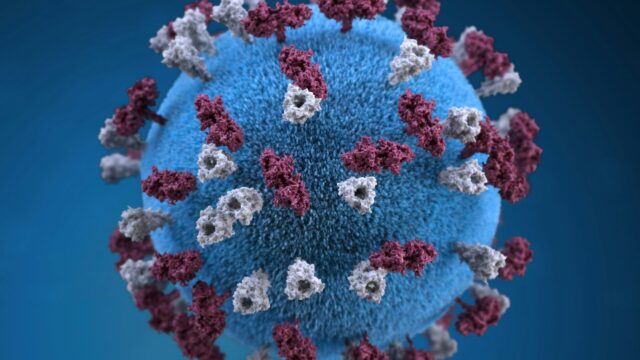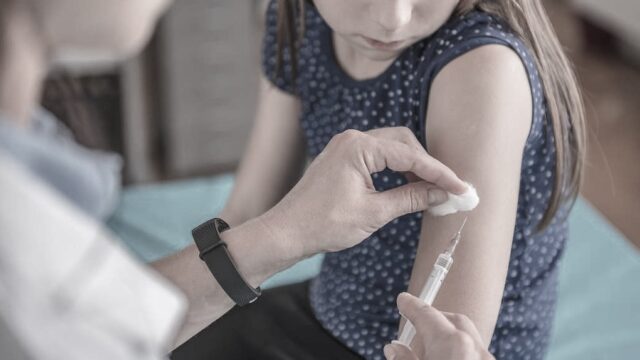Frontline Blog
Building trust, improving access: DC’s path to 93% measles vaccine coverage
July 2025

With measles making a comeback in many parts of the US, DC’s 92.7% kindergarten MMR vaccination rate is a testament to what’s possible when local public health is properly resourced.
It didn’t happen overnight—it happened because city health leaders invested in community trust, access, and infrastructure.
Nearly 93% of kindergarteners in Washington, DC, started school this past year with the measles, mumps, and rubella (MMR) vaccine on record – a significant public health milestone. Just four years ago, that number stood at only 78.9%.
This steady climb – culminating in a 92.7% vaccination rate for 2024–2025 – tells an important story about partnership and the kind of persistent, behind-the-scenes work that local health departments carry out every day to protect their communities.
The District of Columbia’s progress is especially notable in light of national trends. Childhood immunization rates across the country declined after the COVID-19 pandemic disrupted routine care.

Rather than accept that decline as the new normal, DC Health launched a citywide campaign to close the immunization gap – especially for the MMR vaccine, which is crucial for preventing measles, one of the most contagious diseases that can be lethal for babies and young children. With up to 90% of unvaccinated people getting infected if exposed, and herd immunity requiring a 95% vaccination rate, every percentage point matters.
DC Health’s success didn’t happen overnight. It came from years of coordinated effort with partners across the city: the Office of the State Superintendent of Education (OSSE), DC Public Schools and charter schools, and community providers.
Together, these groups aligned their strategies around key student transitions – kindergarten, 7th grade, and 11th grade – using them as checkpoints. They invested in weekly coordination calls, hands-on training for school staff, and real-time support for families navigating vaccination requirements.
Importantly, DC Health made it easier for families to get vaccinated. Vaccines were more readily available through mobile health units, urgent care centers, pharmacies, and school-based clinics. Public education campaigns, reminder systems like robocalls and mailings, and town halls helped build trust and awareness.
The city also strengthened its data infrastructure, allowing for better communication between schools, providers, and public health systems – including across state lines with neighboring Maryland and Virginia.
This success was powered in part by federal pandemic recovery dollars. Those investments supported the infrastructure, staffing, and communications needed to restore and expand access to routine vaccinations. They helped rebuild trust, reduce barriers, and lay groundwork for a more equitable and resilient system.
This is the kind of work the U.S. Department of Health and Human Services (HHS) should continue to prioritize and fund. DC Health’s MMR vaccination effort shows what’s possible when local health departments have the resources and partnerships they need.
It also underscores the value of sustained, strategic investment – not just in crisis moments, but for the long-term protection of public health.


